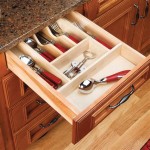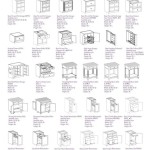Plastic Storage Containers For Kitchen Cupboards: A Comprehensive Guide
Plastic storage containers have become ubiquitous in modern kitchens, prized for their versatility, durability, and affordability. Specifically designed for use in kitchen cupboards, these containers offer a practical solution for organizing food items, maximizing space, and maintaining freshness. This article will delve into the various aspects of plastic storage containers designed for kitchen cupboards, covering materials, types, benefits, selection criteria, maintenance, and potential drawbacks.
The primary function of these containers is to provide a secure and organized storage solution. Without them, kitchen cupboards often become cluttered and chaotic, making it difficult to find specific ingredients or food items. Plastic containers help to compartmentalize different types of food, preventing cross-contamination and ensuring that everything is easily accessible. This is particularly useful for storing dry goods like flour, sugar, pasta, and spices, which can easily spill and create a mess.
The material used in the construction of plastic storage containers is a critical factor determining their performance and safety. Different types of plastics possess varying properties, impacting their durability, resistance to chemicals, and suitability for food contact. Understanding these differences is crucial for making informed purchasing decisions.
Polypropylene (PP) is a commonly used plastic known for its high heat resistance and durability. It is often used for containers designed to be microwaved or stored in the freezer. PP is generally considered food-safe and is recyclable, although the recycling rate can vary depending on local facilities. Containers made from PP are typically resistant to cracking and warping, making them a durable option for long-term storage.
Polyethylene (PE) comes in two main varieties: Low-Density Polyethylene (LDPE) and High-Density Polyethylene (HDPE). LDPE is more flexible and is often used for lids or containers designed to be squeezed. HDPE is more rigid and is commonly used for containers that need to withstand more stress. Both LDPE and HDPE are considered food-safe and are recyclable, although LDPE recycling is less common in some regions. PE containers are generally lightweight and resistant to impact.
Polyethylene Terephthalate (PET) is a clear, strong plastic commonly used for beverage bottles and some food containers. It offers good barrier properties, which help to keep food fresh. PET is recyclable and is often recycled into new PET containers or other products. However, PET is not typically recommended for repeated use with hot foods or liquids. It is also less resistant to high temperatures than PP or PE.
Tritan is a BPA-free plastic that is known for its clarity, durability, and resistance to staining and odors. It is often used for high-end storage containers and is considered a safe alternative to polycarbonate, which may contain BPA. Tritan containers are typically dishwasher-safe and can withstand a wide range of temperatures. They are also resistant to impact, making them a durable option for everyday use.
Beyond the core materials, some plastic storage containers incorporate additives to enhance their properties. Antimicrobial additives can help to prevent the growth of bacteria and mold, while UV inhibitors can protect the plastic from degradation due to sunlight. These additives can be particularly beneficial for containers used to store food that is susceptible to spoilage or for containers that are frequently exposed to light.
Key Considerations When Selecting Plastic Storage Containers
Choosing the right plastic storage containers for kitchen cupboards involves careful consideration of several factors, including size, shape, sealing mechanism, stackability, and intended use. Evaluating these aspects helps to ensure that the chosen containers effectively meet the specific storage needs. Improper selection can lead to inefficient use of space, food spoilage, and potential frustration.
The size and shape of the containers should be chosen to match the types of food being stored and the available space in the cupboards. Containers are available in a wide range of sizes, from small containers for storing spices and herbs to large containers for storing flour and sugar. The shape of the container can also impact its usefulness. Square and rectangular containers are generally more space-efficient than round containers, as they can be packed tightly together without wasting space.
The sealing mechanism is crucial for maintaining food freshness and preventing spills. Containers with airtight seals are best for storing food that is sensitive to moisture or air, such as cereal, crackers, and coffee. Common sealing mechanisms include snap-on lids, screw-top lids, and lids with rubber gaskets. Snap-on lids are convenient for quick access, while screw-top lids and lids with rubber gaskets provide a more secure seal. The choice of sealing mechanism depends on the specific storage needs and the type of food being stored.
Stackability is an important consideration for maximizing space in kitchen cupboards. Containers that can be stacked neatly on top of each other help to utilize vertical space and prevent clutter. Some containers are designed with interlocking features that allow them to be securely stacked, while others have flat lids that make them easy to stack. When choosing containers, it is important to consider how they will be stacked and to ensure that the lids are strong enough to support the weight of the containers stacked on top.
The intended use of the containers will also influence the selection process. Containers that will be used for storing food in the refrigerator or freezer should be made from freezer-safe plastic that can withstand low temperatures without cracking or becoming brittle. Containers that will be used for microwaving food should be made from microwave-safe plastic that will not melt or leach chemicals into the food. It is also important to consider whether the containers will be dishwashed and to choose containers that are dishwasher-safe to simplify cleaning.
Benefits of Using Plastic Storage Containers in Kitchen Cupboards
Utilizing plastic storage containers within kitchen cupboards offers a multitude of benefits, contributing to a more organized, efficient, and hygienic kitchen environment. These advantages range from enhanced food preservation to improved accessibility and space utilization.
One of the primary benefits is improved food preservation. Airtight plastic containers help to protect food from moisture, air, and pests, which can cause spoilage. By creating a barrier against these elements, plastic containers can extend the shelf life of food items, reducing food waste and saving money. This is particularly important for dry goods, which can easily become stale or infested with pantry pests if not stored properly. The prevention of moisture also can deter mold growth within frequently used items like brown sugar.
Enhanced organization and accessibility are also significant advantages. Plastic containers allow for the compartmentalization of different types of food, making it easier to find specific items and preventing clutter. By grouping similar items together in containers, the contents of the cupboards can be easily inventoried and assessed. Clear plastic containers allow for quick visual identification of the contents, eliminating the need to open multiple containers to find what is needed. Labeling the containers further enhances organization and accessibility.
Maximizing space utilization is another key benefit. Plastic storage containers are available in a variety of shapes and sizes, allowing for the efficient use of space in kitchen cupboards. Stackable containers help to utilize vertical space, while square and rectangular containers maximize horizontal space. By using containers to consolidate food items, the overall volume of items stored in the cupboards can be reduced, freeing up valuable space for other kitchen essentials. This is particularly benefitial for those with limited kitchen storage. Creating a streamlined and visually appealing space enables cooks to find what they need and be at ease within their own kitchen.
Maintaining hygiene is considerably easier with plastic storage containers. They are simple to clean and sanitize, offering a barrier against spills and contamination. Unlike open shelves where food particles or spills can easily accumulate, plastic containers can be removed and quickly wiped down or washed. This ease of cleaning promotes a cleaner and more sanitary kitchen environment, reducing the risk of foodborne illnesses.
Maintenance and Best Practices for Plastic Storage Containers
Proper maintenance and adherence to best practices are essential for ensuring the longevity, safety, and effectiveness of plastic storage containers used in kitchen cupboards. This includes regular cleaning, appropriate storage, and awareness of potential hazards.
Cleaning is a crucial aspect of maintaining plastic storage containers. Containers should be washed regularly with warm, soapy water to remove food residue and prevent the growth of bacteria. For containers that have been used to store oily or greasy foods, a degreasing detergent may be necessary. It is important to rinse the containers thoroughly to remove all traces of soap, as residual soap can affect the taste of food stored in the containers. Dishwasher-safe containers can be cleaned in the dishwasher, but it is important to check the manufacturer's instructions to ensure that the containers are placed on the correct rack and that the water temperature is appropriate. For containers that are not dishwasher-safe, hand washing is recommended.
Proper storage of plastic storage containers is also important. When not in use, containers should be stored in a clean, dry place to prevent the growth of mold and mildew. Lids should be stored separately to allow for air circulation and to prevent them from becoming warped or cracked. It is best to avoid stacking containers inside each other for extended periods, as this can cause them to become stuck together or to develop cracks. If containers must be stacked, it is important to place a piece of paper or cloth between them to prevent them from sticking. Storing containers in a dedicated space, such as a drawer or shelf, helps to keep them organized and prevents them from becoming damaged.
It is essential to be aware of potential hazards associated with plastic storage containers. Some types of plastic, particularly older plastics, may contain harmful chemicals such as BPA, which can leach into food. It is best to choose containers that are made from BPA-free plastic and to avoid using older containers that may contain BPA. Containers should never be used in the microwave or oven unless they are specifically labeled as microwave-safe or oven-safe. Heating plastic containers in the microwave or oven can cause them to melt or leach chemicals into the food. Additionally, avoid using abrasive cleaners or scouring pads on plastic containers, as these can scratch the plastic and create crevices where bacteria can grow.
Regular inspection of plastic storage containers is important for identifying any signs of damage or wear. Cracks, chips, or warping can compromise the integrity of the container and make it unsafe for storing food. Damaged containers should be discarded and replaced. It is also important to check the seals on the lids to ensure that they are still airtight. If the seals are cracked or worn, they should be replaced to prevent food spoilage. By following these maintenance and best practices, plastic storage containers can be kept clean, safe, and effective for many years.

Casewin Plastic Storage Boxes Multiple Colour Organisation Baskets For Kitchen Cupboard Office Bathroom Toy Home Tidy Open Bins With Handles 7 Pack Com

Casewin Plastic Storage Baskets Boxes Stackable Organiser With Handles For Kitchen Bathroom Cupboards Shelves Drawers Blue Com

Casewin Plastic Storage Basket 4 Pcs White Colour Boxes Organizing Bins For Kitchen Cupboard Office School And Home Com

Casewin 4 Pack Plastic Storage Boxes Green Baskets With Handles Stackable Cupboard Organiser Kitchen For Bathroom Bedroom Office School And Home Com

Fridge Box Holder Kitchen Clear Organiser Cupboard Food Storage Container W Lid

Casewin 4 Pcs Plastic Storage Boxes Beige Organiser Baskets For Kitchen Cupboard Office Bathroom School Home 9 6 3 9inch Com

Casewin 4 Packs Plastic Storage Baskets With Handle Rectangular Organiser Basket Boxes For Kitchen Cupboard Office School And Home Blue Com

Casewin Plastic Storage Basket 4 Pcs White Colour Boxes Organizing Bins For Kitchen Cupboard Office School And Home Com

Mdesign Linus Formbu Clear Plastic Stackable Storage Organizer Bin W Bamboo Lid Built In Handles 11 5 X 8 6 25 2 Pack Target

Fridge Box Holder Kitchen Clear Organiser Cupboard Food Storage Container W Lid
Related Posts








